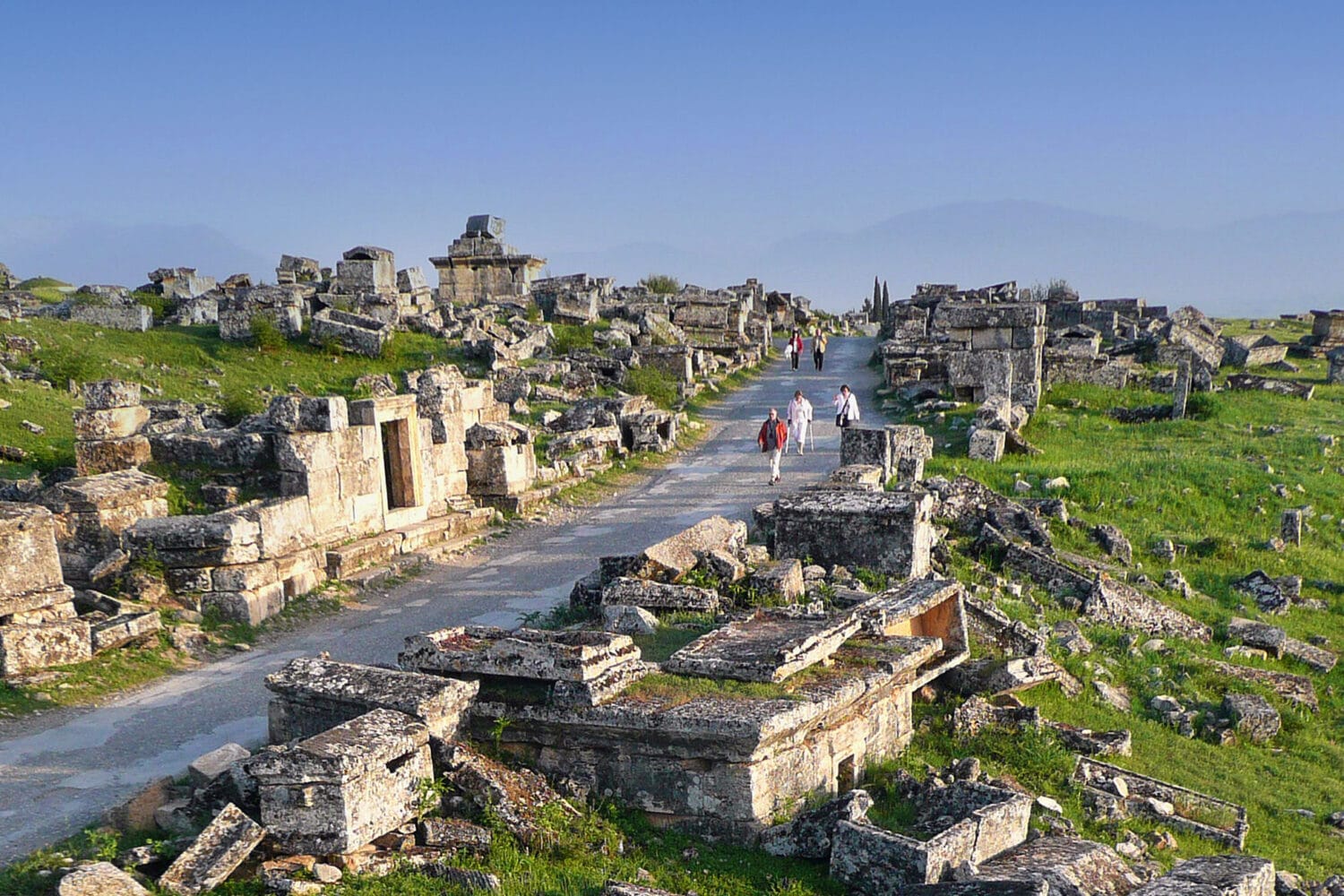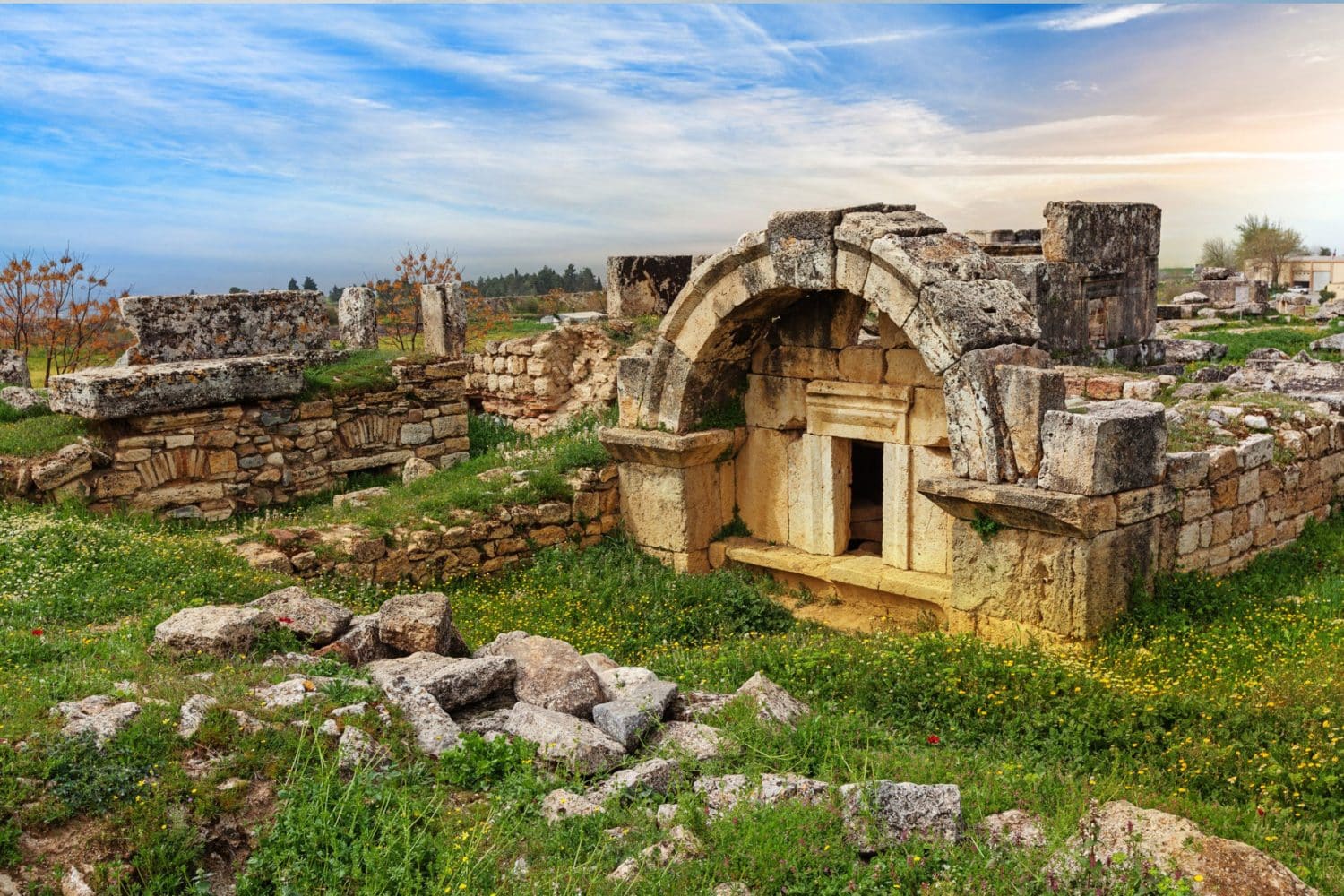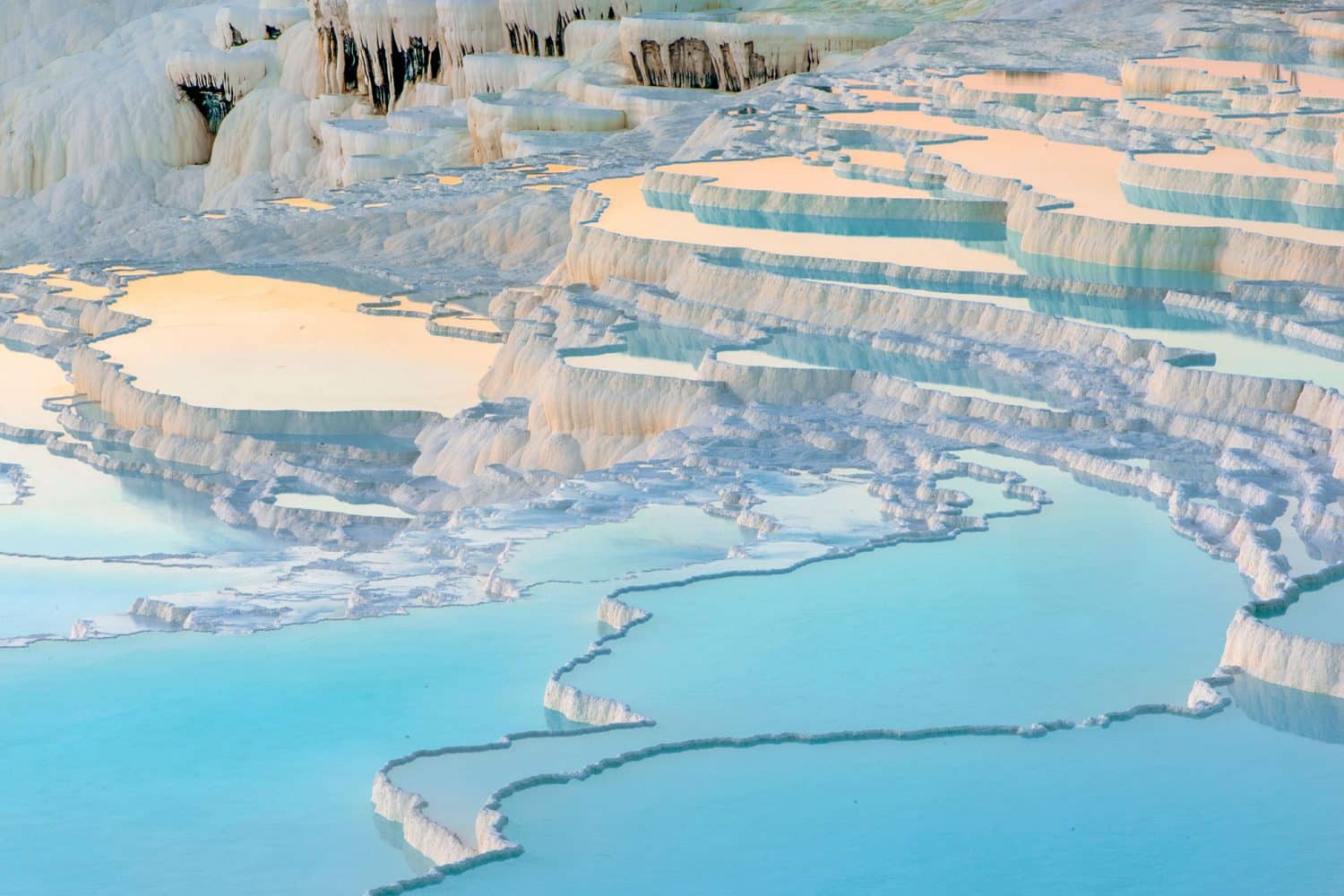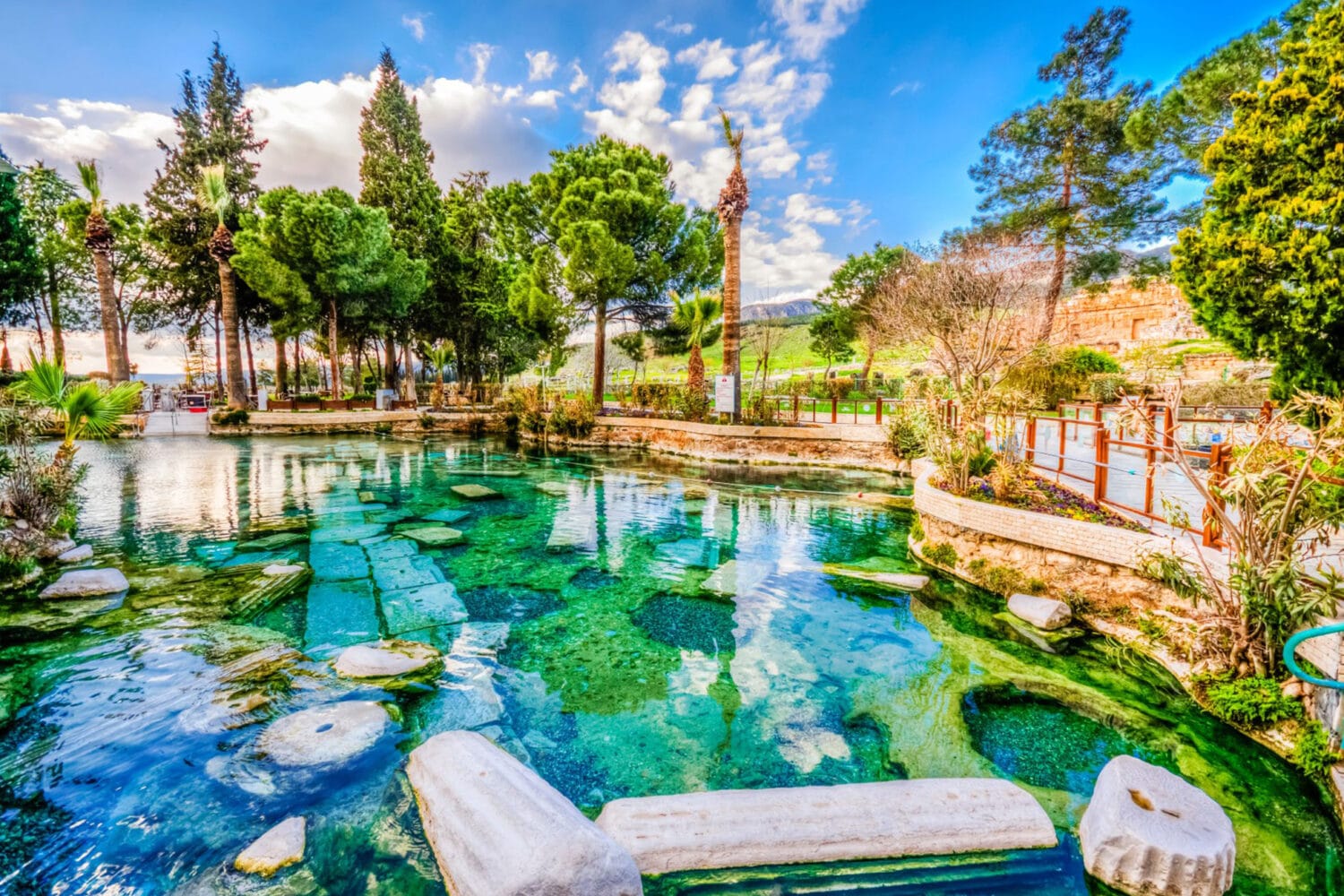
Please do not hesitate to give us a call. We love pre-booking questions and we are always here to help!
+90 384 341 40 44
info@madeinturkeytours.com
Explore the eclectic blend of rich heritage and breathtaking scenery on this private day tour of Pamukkale and Laodicea.
Kusadasi / Pamukkale
08:30
Laodicea, Pamukkale
Laodicea and Pamukkale are excellent examples of what Turkey is about; a land full of sites with immense historical value and the occasional exceptionally stunning scenery that looks straight out of this world.
If you are interested in the ancient world, visiting the ruins of Laodicea and Pamukkale presents an excellent opportunity to learn the ways of the Greeks and Romans. Even better, some of the structures in the ancient cities retain enough of their original beauty to charm anyone, including those not interested in history.
Explore the spectacular ruins in and around the beautiful ancient thermal city of Hierapolis.






After breakfast, enjoy an early morning pick from your hotel or the airport to Laodicea. Your full-day tour begins here.
Historians believe that the city of Laodicea was founded in the 3rd century BCE by Antiochus II of the Seleucid dynasty and named after his wife, Laodice. In its heyday, Laodicea was a thriving commercial city controlling two major trade routes and enjoying immense success in the textile industry (black wool). In addition, banking (or whatever version of banking existed back then) and medicine made it one of the wealthiest city-states in Asia Minor.
In 188 BCE, the city passed into Roman hands as part of Pergamum while retaining much of its success. At the dawn of Christianity, it was home to one of the earliest Christian communities, which was mentioned as one of the Seven Churches in Revelation.
The city fell in the late 11th century at the hands of the Seljuks and had been entirely abandoned by the end of the 13th century.
Not much remains of Laodicea, but the site of the former city is home to highly photogenic ruins. Three gates lead into the ruins, with the most impressive being the gate to Ephesus (the northwest gate). It is a triple-arched structure with towers on both sides and was constructed in honor of Emperor Domitian (81-96 CE).
The main avenue to explore the ruins is the colonnaded Syria street. Following its cobblestone path, explore the Zeus temple and the local basilica church. This is believed to be among the seven churches of Asia, as mentioned by John in Revelation. Inside the basilica, enjoy the beautifully restored mosaics that decorate the floor.
There are also impressive remains of theaters in the north and northwest sections of the ruins. While here, enjoy stunning views of the white terraces of Pamukkale. Heading south from Stria St, explore the awe-inspiring stadium and the bath complex.
Other attractions worth your time include the Odeon, imperial cut, gymnasium, and Caracalla fountain. After exploring Laodicea, we grab lunch and proceed to Pamukkale.
Hierapolis is another city that may have been founded by the Seleucid kings around the 4th century BCE. However, its ancient inhabitants believed that the sun god: Apollo founded Hierapolis, which is probably why its name translates to the sacred city.
Together with Laodicea and Colossae, it was one of the three cities around the Lycus River valley. Hierapolis had thriving wool and textile industry but was most noted for its production of purple dye and the hot springs at Pamukkale. These waters were believed (still are) to have healing properties, a feature that has attracted visitors since time immemorial.
The city fell under Roman rule in 133 BCE, was destroyed by an earthquake in 60 CE but was rebuilt and peaked between the 3rd and 4th centuries. It declined in the 6th century and was completely abandoned after an earthquake in the 14th century.
Welcoming you to Hierapolis is one of the most stunning sights on earth; the white terraces of Pamukkale. But first, explore the magnificent ruins of Hierapolis and marvel at the impressive theater of Hierapolis from 200 BCE.
Follow the city’s grand colonnaded street that runs for one kilometer from the necropolis (city of the dead) to the remains of a Byzantine church. Explore the church and continue to the Temple of Apollo and its Plutonium (a cave that omitted poisonous gas used by the oracle to kill birds and small animals).
Proceed to the remnants of the Agora before enjoying the warm, therapeutic waters of the Antique pool. Our last stop will be at the breathtaking white stepped pools of Pamukkale, where you will enjoy the warm waters and picturesque scene.
End of tour and transfer to Denzil Airport or back to your hotel.
Yes. These include paragliding and hot air ballooning above the beautiful Pamukkale travertines.
